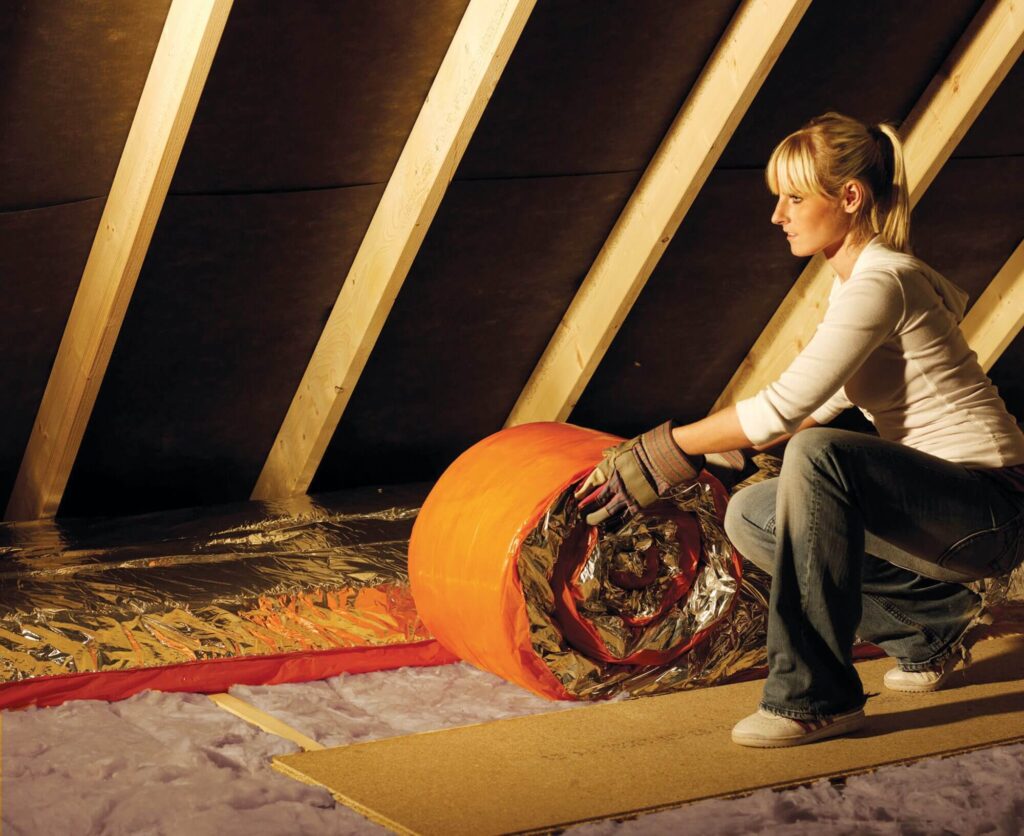As environmental awareness grows, more homeowners are looking for sustainable ways to make their houses greener. One area often overlooked is the loft or attic, which can lose a tremendous amount of heat in the winter.
Insulating your loft is an easy yet effective way to increase energy efficiency, reduce bills, and lower your carbon footprint. With the right insulation materials and installation methods, you can transform your loft into an eco-friendly space that helps, not harms, the planet.
The Problem with Traditional Insulation Materials
Traditionally, fiberglass has been the most common type of insulation used in lofts. While fiberglass can provide good thermal performance for a modest price, it has some significant drawbacks in terms of sustainability.
Most fiberglass is made using melted glass that contains recycled material. However, the manufacturing process requires substantial energy and often uses binders and formaldehyde-based glues. These chemical adhesives can off-gas volatile organic compounds (VOCs) for years, polluting indoor air quality. Once installed, fiberglass is difficult to remove and must be landfilled, as it cannot be recycled or composted.
For homeowners who want an insulation material with low embodied energy, fewer chemical pollutants, and better recyclability, fiberglass falls short as an eco-friendly solution. The good news is that greener options are available.
The Sustainable Alternatives – Natural Insulation Materials
Cellulose Insulation Cellulose insulation offers an excellent sustainable alternative to traditional fiberglass batts and blown-in insulation. Cellulose starts with recycled paper products like cardboard and newspaper which are ground down and turned into loose fibers. About 85% of cellulose insulation consists of recycled paper.
Unlike fiberglass, cellulose insulation contains no harsh chemical binders or flame retardants that can off gas into your home. It relies instead on the natural fire-resistant properties of cellulose fibers. This makes cellulose a great choice for households with members who suffer from chemical sensitivities.
Cellulose also delivers superb insulation performance thanks to its dense installation and high R-value rating of R3.6 to R3.8 per inch. When blown into spaces, cellulose insulation adheres well around pipes, wires, ducts, and other uneven surfaces. This helps eliminate heat-leaking gaps and air pockets that can raise energy bills.
Lastly, cellulose insulation is more sustainably produced than most of its major competitors. The cellulose fibers come not just from recycled materials but also recycled water used during manufacturing. And unlike so many insulation varieties, cellulose can be composted at the end of its lifespan rather than clogging up landfills indefinitely.
Hemp Insulation
As an exceptionally fast-growing and low-maintenance crop, industrial hemp presents another great eco-friendly insulation alternative. The stalks of hemp plants consist of strong bast fibers which form the basis for hemp insulation products. After harvest, the fibrous stalks get processed using little energy and zero chemical additives.
Hemp insulation delivers a natural R-value between R3.5 to R3.7 per inch. The dense, matted material fills building cavities efficiently and maintains its lofty thickness over time. Air pockets are minimized, resulting in better acoustic performance and draft prevention as well. For moisture control, hemp fibre actually absorbs and releases water vapor to maintain healthy humidity levels in a home. The antibacterial properties of hemp also resist mold and mildew growth within insulation.
From cultivation to disposal, hemp insulation brings only positive impacts to the environment. Hemp removes carbon dioxide from the atmosphere faster than most any forest or commercial crop while enriching soil with nutrients and organic matter. It requires no fertilizers, herbicides, or pesticides to grow well. Near the end of its lifespan, hemp insulation can return straight to the soil as a non-toxic compostable material.

Sheep Wool Insulation
While rarely associated with insulation, sheep wool actually performs exceptionally well to conserve energy. Natural sheep wool contains lots of dead air space between its springy fibers, giving it an R-value between R3.0 and R3.8 per inch. As one of nature’s best insulators, wool keeps warmth in during the winter and prevents overheating in the summer.
Sheep wool insulation brings the added benefits of sound-dampening properties along with fire and moisture resistance. The fluffy fibre mass can hold large amounts of water vapor without feeling wet. Impressive air filtration abilities also enable wool to maintain indoor air quality. Respiratory irritants and toxic pollutants get trapped within the wool fibers rather than dispersing through your home.
Environmentally speaking, wool insulation is a dream as it turns what was previously agricultural waste into a sustainable building material. Using wool for insulation helps limit the massive open burning of sheep fur still practiced globally. Wool insulation typically contains 70% recycled wool content or higher. Any undisposed wool can always return to the earth as a fully biodegradable green product when its time comes.
Eco-Friendly Installation Practices
When it comes to the installation process, you can further green your loft insulation through conscientious contractor choices and minimal-waste methods. Insulation Point mentioned that you should consider installing insulation yourself or hiring locally to reduce the transportation miles and fuel consumption related to the job. Use insulation materials that arrive in recyclable, bulk packaging rather than an abundance of plastic wrapping waste. Cellulose and hemp insulation commonly come in large compostable bags.
During installation, ensure loose-fill insulation achieves the proper settled depth recommended by the manufacturer to meet efficiency targets. Request dense-pack methods and low-dust products to minimize off-gassing and materials ending up in the air you breathe rather than your insulation application. Finally, responsibly handle any scrap materials like staves, batts, or negligible waste by recycling particles if possible.
The Green Insulation Payoff – Saving Money and the Planet
While greener loft insulation involves a bit more consideration regarding materials and installation, the long-term rewards easily justify the effort. Eco-friendly insulation not only lowers energy demands to conserve environmental resources. It also saves homeowners money each month on reduced heating and cooling bills.
Over years of use, the small upfront investment into extra insulation pays dividends every time your energy efficient house comfortably maintains liveable indoor temperatures. Why waste money heating or cooling the great outdoors? Proper loft insulation allows you to channel savings toward other aspects of sustainable living like renewable power, smart thermostats, or even community environmental initiatives.
Final Words
When comparing insulation bids or stocking up on DIY materials, do not forget the importance of sustainability factors alongside R-values. The greenest loft insulation leverages natural recycled materials, responsible manufacturing processes, non-toxic indoor air quality protections, and options to reuse insulation scraps or compost products once retired. Investing a little more into the loft can benefit family health and household wealth while keeping your home eco-friendly for decades to come.






